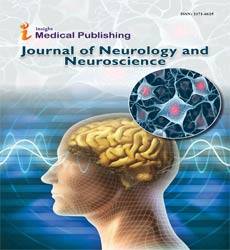Abstract
Blood pressure changes in patients with migraine: Evidences, controversial views and potential mechanisms of comorbidity
Migraine and hypertension are common complaints and both have high prevalence worldwide. The comorbidity of migraine with hypertensionis a common issue since 1913. Recent epidemiologic and population-based studies put some doubt regarding the association betweenmigraine and hypertension, no association or even negative association was found by some authors. Authors who supported the positiveassociation suggested that rennin-angiotensin system as a biological link between hypertension and CNS activities that are relevant formigraine pathogenesis. Authors who denied the association suggested a coincidental existence since any association between two prevalenthealth conditions is likely to be detected in large series. Authors who supported the negative association suggested a central regulatoryand homeostatic process resulting in reduction of sensitivity to pain (a phenomenon called hypertension-associated hypalgesia). Baroreflexstimulation, endogenous opioids, catecholamines and calcitonin peptide may influence blood pressure and pain sensitivity in patients withmigraine and lowers the number of migraine attacks in hypertensives. Despite the uncertainty still present in this field, a unifying view amongmost recent studies suggests that migraine is positively correlated with diastolic blood pressure but negatively correlated with systolic bloodpressure and pulse pressure. Similar vascular risk profile and the abnormal properties of systemic as well as cranial arterial vessels exist insubjects with migraine and hypertension. On the other hand poor control of blood pressure may exacerbate the frequency and severity ofmigraine and other headaches. These evidences may suggest that both conditions may coexist as part of a systemic disease. Thus establishingthe blood pressure should be a routine task in the assessment of all headache patients and the control of hypertension in migrainepatients is an important factor for the success of migraine treatment and to lower cardio- and cerebro-vascular risks.
Author(s):
Sherifa Ahmed Hamed
Abstract | Full-Text | PDF
Share this

Abstracted/Indexed in
- Google Scholar
- Open J Gate
- Genamics JournalSeek
- The Global Impact Factor (GIF)
- China National Knowledge Infrastructure (CNKI)
- Directory of Research Journal Indexing (DRJI)
- WorldCat
- Proquest Summons
- Scientific Journal Impact Factor
- Secret Search Engine Labs
- Euro Pub
Open Access Journals
- Aquaculture & Veterinary Science
- Chemistry & Chemical Sciences
- Clinical Sciences
- Engineering
- General Science
- Genetics & Molecular Biology
- Health Care & Nursing
- Immunology & Microbiology
- Materials Science
- Mathematics & Physics
- Medical Sciences
- Neurology & Psychiatry
- Oncology & Cancer Science
- Pharmaceutical Sciences

